Step-by-step Picture Book Writing in Layers • Natascha Biebow
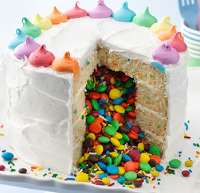 Betty Crocker's Rainbow Surprise Inside Cake - writing in layers!In my writing and teaching, I have recently begun to play around and reflect on the process of creating a picture book in a different way.
Betty Crocker's Rainbow Surprise Inside Cake - writing in layers!In my writing and teaching, I have recently begun to play around and reflect on the process of creating a picture book in a different way. Picture this:
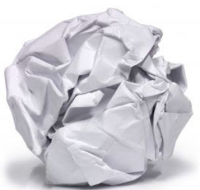 Have you ever tried drawing something and been frustrated that it doesn’t turn out quite like you intended?
Have you ever tried drawing something and been frustrated that it doesn’t turn out quite like you intended? Uh-huh, I hear you nod.
Have you ever watched someone drawing something and admired their apparent ease? Like this!
Yes, I hear you nod.
But is it easy?
If you look closely at this process, you will notice that it’s a question of layering – starting with the outline, very sketchy, with a light touch of the pencil. Then, the artist adds more shape, a bit more texture, rubbing this bit out, adding that bit there, playing with the idea. Slowly, the general shape begins to emerge!
It’s usually not a question of starting out with a fully-formed piece of work and trying to edit that because, frustratingly, well, you can’t START with cake.
You have to put in all the ingredients – and you have to first decide WHICH ONES? – and then lovingly bake your picture book story so it rises and is light and fluffy and just right for young readers.
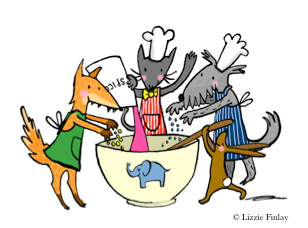
If you try to start with cake and keep fussing, adding new and interesting toppings, it may LOOK marvelous . . .
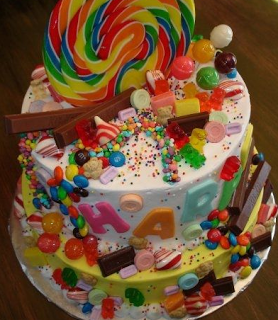
. . . BUT if the cake isn’t right in the first place,
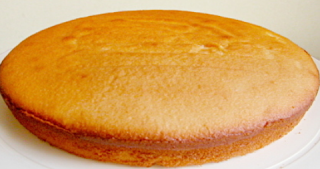 it will never work.
it will never work. Coming back to our artist’s process:
First, the artist sketches out the idea with a light touch, testing it out in the space, finding its shape.
 from ART90OP's from youtube.com/acrylicpaintingtechniques
from ART90OP's from youtube.com/acrylicpaintingtechniques You can try pacing out your picture book into 12-14 spreads.
Look for a way into your story, find a strong hook.
Next, the artist adds stronger, darker lines and details to define the initial sketches.
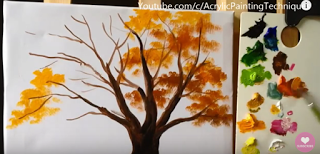 from ART90OP's from youtube.com/acrylicpaintingtechniques... sure you have an opening that hooks in the reader and an ending that bookends the opening and gives the story a satisfying conclusion, a twist or that 'aw' factor. Check your plot doesn’t read like a list, with everything having the same weight, that there is a clear climactic turning point.
from ART90OP's from youtube.com/acrylicpaintingtechniques... sure you have an opening that hooks in the reader and an ending that bookends the opening and gives the story a satisfying conclusion, a twist or that 'aw' factor. Check your plot doesn’t read like a list, with everything having the same weight, that there is a clear climactic turning point. Now, the artist adds colour and texture, in layers – look how it’s added depth!
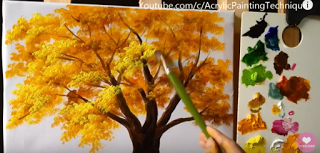 from ART90OP's from youtube.com/acrylicpaintingtechniques
from ART90OP's from youtube.com/acrylicpaintingtechniques Check your characters’ motivations. Make sure readers will care about your protagonist. Add voice. Make it the story only you could have written or illustrated.
Then, the artist stands back and observes. He adds the final touches.
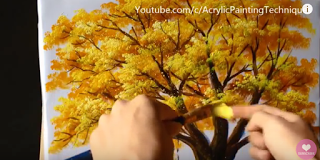 from ART90OP's from youtube.com/acrylicpaintingtechniques
from ART90OP's from youtube.com/acrylicpaintingtechniques At last, ta-da! The result is a picture that sings, that speaks to its audience.
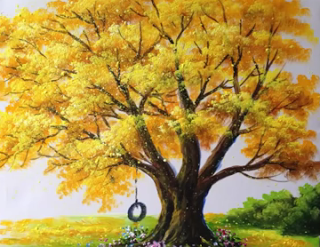 from ART90OP's from youtube.com/acrylicpaintingtechniques Watch the artist at work!
from ART90OP's from youtube.com/acrylicpaintingtechniques Watch the artist at work! Creating picture books is a frustrating business. Not only do you have to have that singular commercial idea, but it has to be written with voice, style, pace and emotional depth to leave the reader with a feeling of satisfaction, a laugh, a tear, an ‘aw’ moment.
Many of my students are frustrated at the fact that it doesn’t all come together at once, that you can’t edit something that isn’t yet on the page. And this is just it – you must first sketch it out and play with the idea, like the artist. THEN you can add layers, erase, add and shape and depth.
Annoyingly, when you stand back – and you must read your work aloud and try to be objective, like a reader – you notice things that must be edited further and changed. And when you make these changes, often new things unravel. Argh!
Once you have a working draft, it is time to add in the texture, the final toppings, the ta-da! to give the story pizzazz and make it really shine.
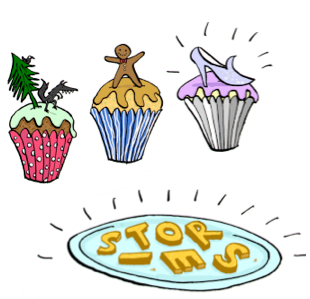
Here, a good technique is to go through and look carefully at each word. Use the highlighter revision technique. Read it aloud again.
But working in this way is rewarding and gives the creator permission to experiment, to start with a sketch and PLAY around a bit before investing time and effort in fine-tuning their work. See all those multi-coloured Smarties in the Rainbow Surprise Inside Cake (below)? Go on, have a play, taste a few even, and figure out the heart of your story cake – the nugget of your story – before rolling up your sleeves to add the rest of the layers.
 Betty Crocker's Rainbow Surprise Inside Cake - writing in layers!
Betty Crocker's Rainbow Surprise Inside Cake - writing in layers!________________________
Natascha Biebow
Author, Editor and Mentor
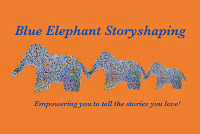 Blue Elephant Storyshaping is an editing, coaching and mentoring service aimed at empowering writers and illustrators to fine-tune their work pre-submission. Check out my small-group coaching Cook Up a Picture Book courses! Natascha is also the author of The Crayon Man (coming in 2019!), Elephants Never Forget and Is This My Nose?, editor of numerous award-winning children’s books, and Regional Advisor (Chair) of SCBWI British Isles.
Blue Elephant Storyshaping is an editing, coaching and mentoring service aimed at empowering writers and illustrators to fine-tune their work pre-submission. Check out my small-group coaching Cook Up a Picture Book courses! Natascha is also the author of The Crayon Man (coming in 2019!), Elephants Never Forget and Is This My Nose?, editor of numerous award-winning children’s books, and Regional Advisor (Chair) of SCBWI British Isles.
Published on May 14, 2017 20:00
No comments have been added yet.



